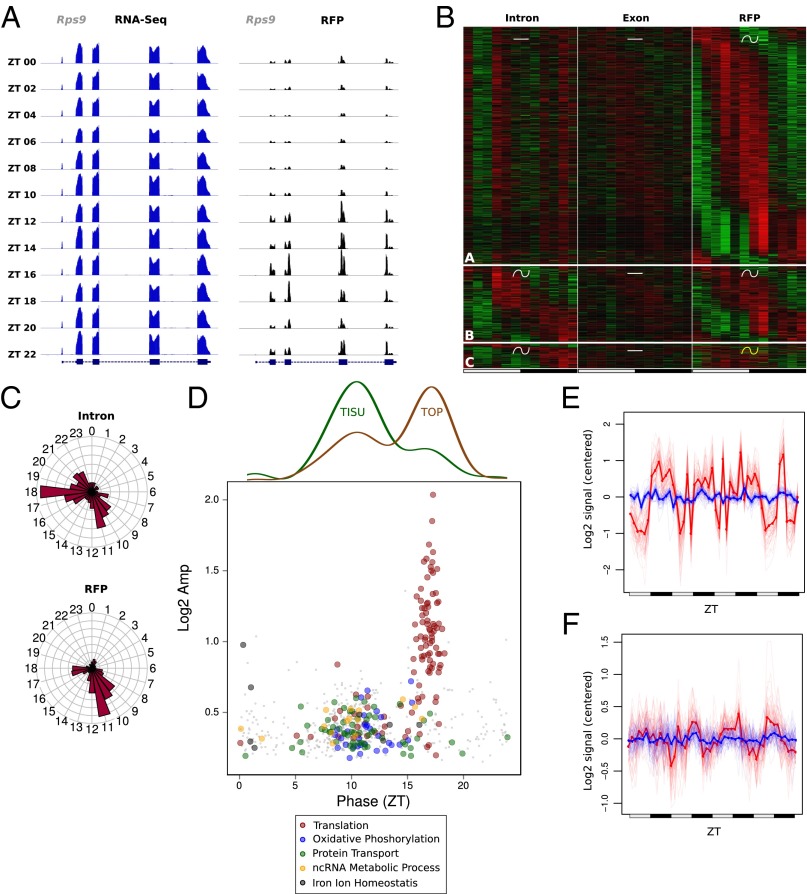Fig. 4.
Translation efficiency is regulated during the diurnal cycle for genes with 5′-TOP and TISU motifs. We used the same rhythmic analysis as in Fig. 2. (A) Exon RNA-Seq (Left) and RFP (Right) signals for the ribosomal protein gene Rps9 show increased translation during the dark phase. (B) Expression heat map for the three genes groups showing rhythmic RFP but constant mRNA levels. (Top) Constant transcription and mRNA abundance followed by rhythmic translation. (Middle) Constant mRNA abundance with similar rhythmic parameters for transcription and translation. (Bottom) Constant mRNA abundance with differential rhythmic transcription and translation. (C) Phase distribution of intronic and RFP signals for genes in B. (D, Bottom) Log2 amplitudes and phases of RFP signal for genes in B, colored by enriched functions. (Top) Densities indicate respectively fraction of TISU and TOP motifs at each phase. (E and F) Mean of relative expression profiles across genes with TOP (E) or TISU (F) motifs in D with phase respectively between ZT15–20 and ZT7–13. Exonic signals are in blue and RFPs signals in red.

